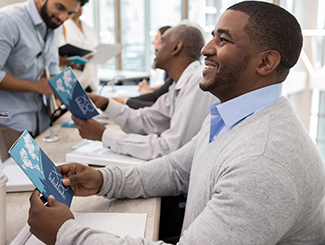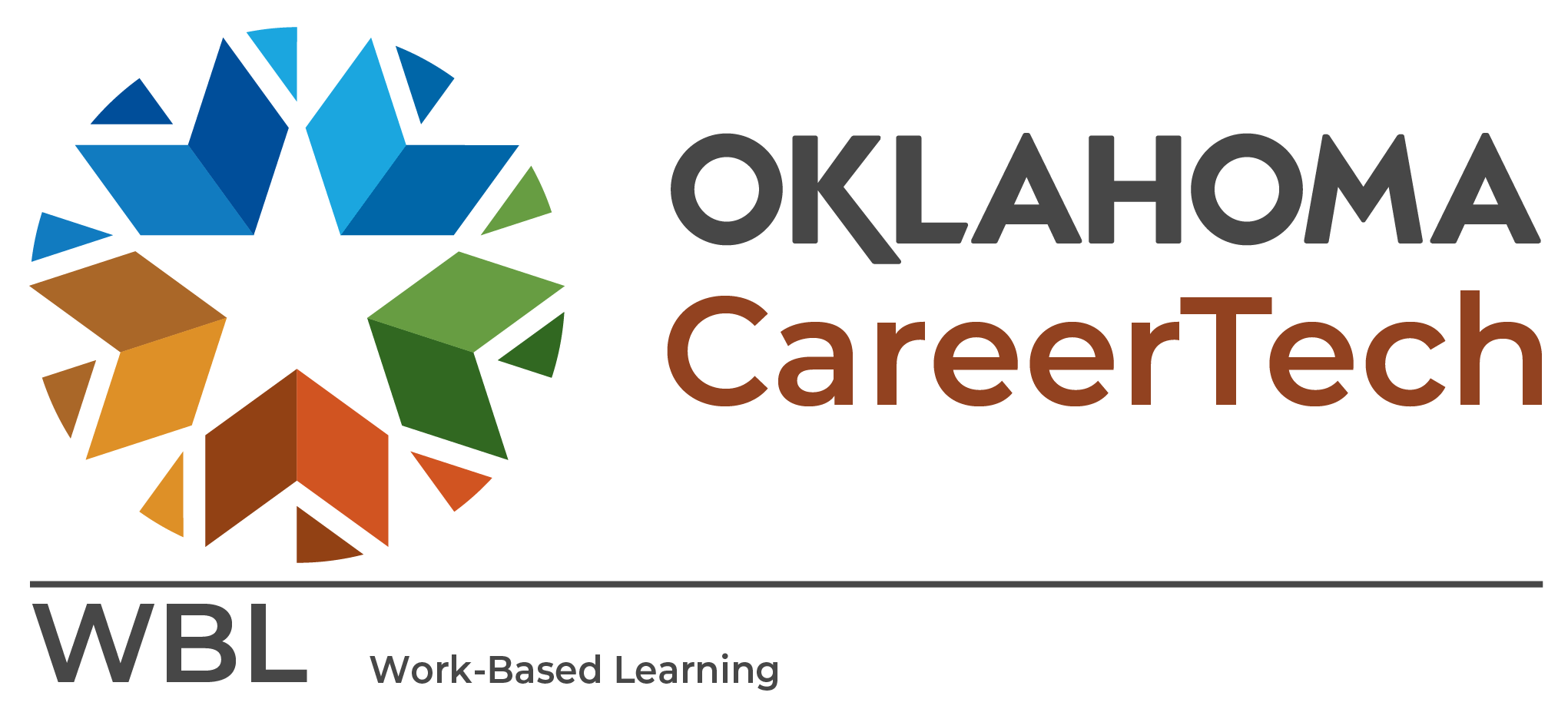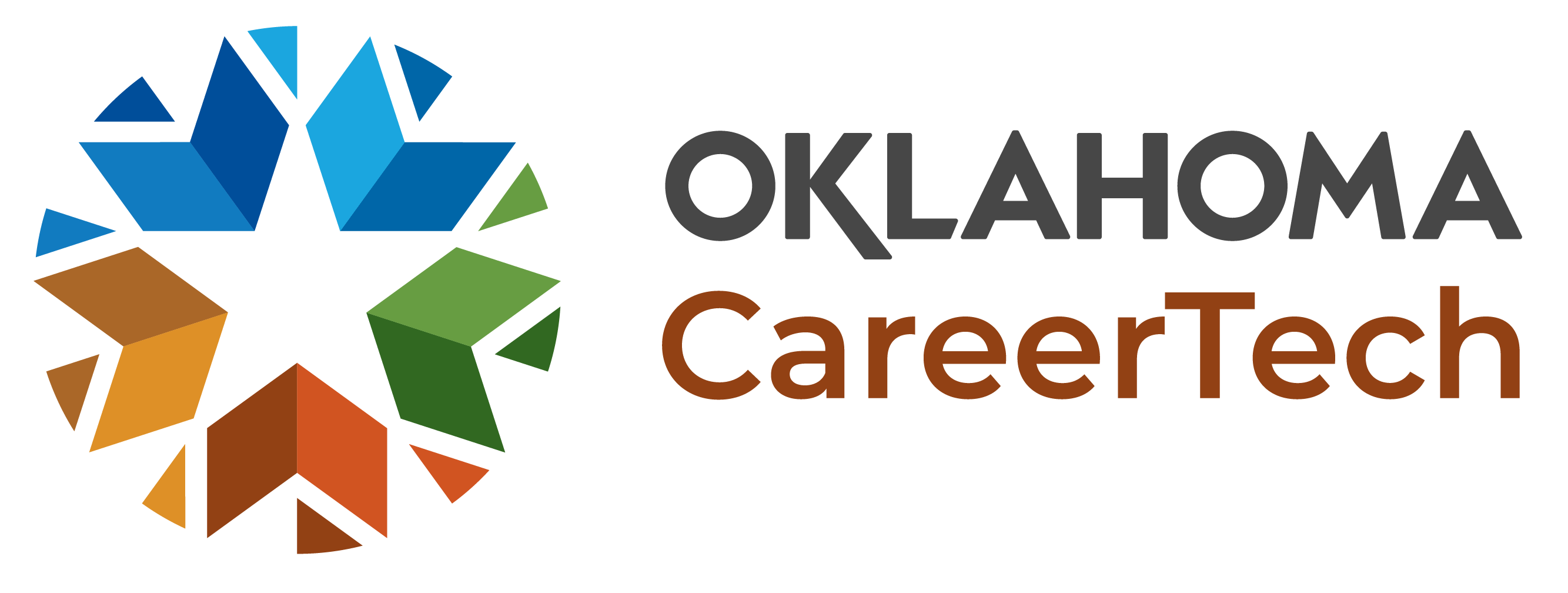Career Fairs


Overview
What Are Career Fairs?
These recruitment events include two- and four-year colleges and universities, technology centers and other technical schools, certificate or licensure programs, and apprenticeships.
Career fairs are career awareness activities that expose students to a wide range of careers and education/training opportunities. These recruitment events include two- and four-year colleges and universities, technology centers and other technical schools, certificate or licensure programs, and apprenticeships offered through employers.These events typically bring multiple employers and institutions into one large space where each exhibitor has a table or booth at which to showcase options for students. Since most postsecondary institutions participate in career fairs as part of their regular recruitment functions, the focus of this chapter is on working with employers to participate in career fairs. When planning a career fair, the best contacts at institutions will be the recruitment or admissions staff. Colleges and technical schools are usually well-equipped to provide an informative exhibit without much help from the WBL coordinator. Businesses may require more help.
Fairs provide students with opportunities to learn about a wide variety of potential career paths and postsecondary options and help them identify career interests that warrant further exploration. They also help students learn about the high school courses required to enroll in postsecondary education and/or prepare for specific occupations. Although often focused on either schools or careers, fairs that combine the two may enable students to connect learning about careers with learning about how to access the education and training required for those careers.
Many fairs feature employers that are looking to recruit high school students near or just after graduation.
Just as impactful are opportunities for immediate employment. Many fairs feature employers that are looking to recruit high school students near or just after graduation. Students should be prepared to look at the short-term and long-term opportunities these companies can provide. Some companies have a process to grow the knowledge and skills of their employees through formal internal education programs or through tuition reimbursement programs. Students who can take advantage of these programs may be able to make a living while pursuing post-secondary education.
The students’ primary roles are to interact with adults and ask questions that will help focus their future career exploration activities. They may also collect brochures or other informational handouts that can be used to stimulate family and school discussions about education and career planning.
Which Students Participate in Career Fairs?
While career fairs are typically offered to students in the 7th through 12th grades, expectations for student outcomes and the content presented by employers and education/training institutions should be relevant to the age of participating students. Fairs attended by middle school students should offer broad information about careers, while fairs attended by high school students should provide more detailed information about specific careers and the education and other requirements for them, as well as possible opportunities for immediate employment.

How Are Career Fairs Structured?
A career fair might be planned for a single school or for multiple schools in a region. A larger fair would be a more efficient way for exhibitors to reach more students, but it would require a larger venue and transportation for students. In rural areas, a fair for multiple schools would require transportation over longer distances. The WBL coordinator should weigh the trade-offs before deciding whether to plan a single regional fair, a fair for a few schools in the same area, or one for each school.
Career fairs typically last from several hours to a full day. Some extend into the evening to facilitate attendance by those who work during daytime hours. The format can vary based on the age of participating students and the context in which the fair is offered. Some fairs include breakout sessions that highlight specific careers, education/training programs, or industry trends, while others simply host a broad array of exhibitors from employers and education/training institutions. Some fairs have employer booths and education/training booths in separate rooms, while others have them together in one room. Often, students are scheduled to arrive at the fair in “shifts” to prevent overcrowding and provide each group time to interact with the exhibitors.
While each fair should be tailored to local context, needs, and resources, a sample agenda for a fair could include:
- Introduction/overview sessions for students and exhibitors
- Student and exhibitor overviews should be conducted separately, but both should cover what the day will look like, what is expected of them, the location of restrooms and refreshments (if provided), and the schedule for breakout sessions (if any).
- The student overview could be done on the bus on the way to the fair (if it is off-campus) or in class the day before.
- Blocks of time for students to visit booths and/or breakout sessions
- Wrap-up/close of fair
Strategies to track and manage student participation at booths and in breakout sessions should be developed during the planning stages. Some fairs document student participation through stamps or signatures obtained at exhibitors' booths – like getting stamps in a “passport to the future.”

How to Implement a Career Fair
Successful career fairs require collaboration, communication, and preparation by multiple stakeholders. The process involves:
- Identifying planning and implementation partners
- Selecting an appropriate venue
- Developing and funding a budget
- Recruiting employer and education/training exhibitors
- Making logistical arrangements
- Collaborating with teachers to prepare students to learn and participate
- Preparing exhibitors to communicate effectively with students

The work involved in planning a career fair, whether it is for one school or several districts, can extend over several months. As noted in the Introduction, the following steps should be followed when organizing a career fair.
- Identify the partners needed to assist with implementation. Typically, these will be district and school staff, representatives of employers or employer associations, and representatives from colleges, technology centers and other technical schools, certificate or licensure programs, and apprenticeships.
- Consult with district and school staff to determine the scope of the fair (education/training, career, or both; one school, one district, or multiple schools or districts).
- Working with school partners, identify a few options for the date of the fair and venues at which it could be held.
- Draw up a tentative budget, which may include: facility rental; equipment rental (e.g., tables, chairs, and audiovisual or other equipment); transportation, and refreshments. Develop a strategy for securing the necessary funds (e.g., school or district budget, fees from exhibitors, sponsorships, or local philanthropies).
- Solicit student, teacher, and counselor input on specific exhibitors that are of greatest interest. Use this information to develop an invitation/recruitment list for the fair.
- Recruit employers and institutions to participate in the fair. Recruitment can be slow and time-consuming; starting early is advisable.
- Arrange student transportation, unless the fair will be held at a single school for only the students who attend that school.
- Prepare students for the fair.
- Prepare exhibitors for the fair and make sure that their needs are met.
- Hold the fair and document it with photos, as appropriate.
- Provide structured opportunities for students to reflect on their experiences.
- Obtain evaluations from students and exhibitors.
- Recognize participating stakeholders, especially sponsors and employers.
The following pages provide more detailed descriptions of steps for implementing a well-organized fair. These steps are presented in the form of a timeline, starting six months before the fair. Some steps in the timeline will not apply to classes of adult students. The timeline is flexible and can be condensed, but proper planning is essential as there will be many details to manage.

Suggested Implementation Timeline
Note: Throughout this manual, the term WBL coordinator (typically, a district or school staff member) is used to refer to the individual responsible for planning and implementing WBL activities. Depending on the activity and context, stakeholders from school sites (principal, counselors, teachers, and administrative staff) may be involved. The WBL coordinator should be sure to use the WBL database, as described in the Introduction, to track employer and school contact information as well as the tasks each has agreed to carry out with respect to the college and career fair.

The WBL coordinator should refer to the overall WBL plan (see Introduction), if there is one, to ensure that the scheduling of the college and career fair is coordinated with the implementation of other WBL activities planned for the district or school. Employers, colleges, and school staff will appreciate it if the WBL coordinator initiates contact for the fair in that larger context.
The WBL coordinator is assumed to be the individual responsible for completing or assigning all the tasks listed below, except where noted otherwise.
Six months before the career fair
- Create a planning team. Members might include district or school staff, employers in the private, public, and non-profit sectors, representatives of employer associations, and representatives from educational/training institutions. This team will: plan the event, assign responsibilities for various tasks associated with the fair, develop a budget and secure resources to fund it, determine who will staff the event, and participate in any follow-up necessary after the fair. The planning team should meet regularly (in person or by conference call) to make sure everyone is well-informed and on track. More frequent communication will take place among team members with respect to specific tasks.
- In partnership with school staff (e.g., counselors, career advisors, teachers, and administrators), determine which students, classes, or schools will participate in the fair.
- Determine whether providing breakout sessions for more in-depth presentations by some exhibitors is desirable.
- Based on the anticipated attendance, the number of likely exhibitors, and whether space is needed for breakout sessions, identify potential locations for the fair. The WBL coordinator should then follow up to investigate costs, availability, capacity, and other factors that would influence the choice of location. The location should provide an open space for exhibitor booths or tables. Spaces for breakout sessions should be nearby and large enough to accommodate special presentations for 15 to 30 students at a time.
- After consulting school calendars and checking with key employers and colleges, set a date for the fair and reserve the location. Assign specific tasks to specific team members, along with milestones and deadlines.
- Work with school staff to determine how they will obtain any necessary parent/guardian permission for students to register and participate in the fair and teacher permission to be absent from classes. Examples are provided in the Resources section, but the school should use the same forms it uses for field trips and the same process and deadlines for distributing and collecting the forms. The forms may need to be modified to include a release for photographic documentation of the fair.
- Consult with teachers, counselors, and career advisors to identify which employers and institutions are likely to be of greatest interest to students. These are the participants that will be targeted for the most vigorous recruitment and, if space for the fair is limited, will get priority for exhibit space. Send a “save the date” communication to these high-priority employer and college contacts.
- Use the WBL database and other sources (e.g., organizations like chambers of commerce, economic development agencies, workforce development boards, state departments of labor or commerce, and the personal networks of district and school staff members) to identify other employers to target.
- Solidify the final budget and secure funding commitments.
Four months before the career fair
- Begin outreach to employers and institutions, especially those identified to be of greatest interest to students, to build awareness of the upcoming fair and generate interest. Review the employer outreach section of the Introduction for useful tips.
- Start with high-priority employers and others that have had successful experiences with WBL activities or have been well-received at past career fairs. A sample invitation email is included in the Resources section.
- Meet with representatives of chambers of commerce, other industry and trade associations, and service clubs to talk about the fair and ask them to encourage their members to participate. Provide whatever information they need (e.g., newsletter article or draft email to members) to make it easy for them to help. The sample outreach materials in the Resources section can be adapted for this purpose. The WBL coordinator might offer to attend a meeting to provide additional information about plans for the fair.
- Contact education/training institutions that should be included in the fair.
- Send information home with students for parent awareness and recruitment of additional employers.
- As potential exhibitors respond to these contacts, secure their commitments to participate using or adapting the exhibitor participation form in the Resources section.
Three months before the career fair
- Follow up on invitations, especially to the exhibitors of greatest interest to students. Ask employers that have already committed to participating for help in recruiting others, using peer communication such as the example in the Resources section.
- Create a participant checklist to help representatives plan their exhibits for the fair. The Resources section includes a sample that can be adapted to local context and needs.
- Communicate the schedule for the fair as well as the space and equipment that will be available to exhibitors and offer tips for how to engage with students during the fair. Give examples of hands-on activities or demonstrations that will expose students to work-related tasks.
- Send the participant checklist to exhibitors that have submitted participation forms. Offer to assist them in planning their exhibits.
- Continue outreach as needed until the high-priority exhibitors have responded and the available exhibit spaces are filled.
- Determine transportation needs and how they will be addressed (e.g., bus, personal/parent vehicles, or others).
- Determine the number of volunteers needed for the fair and identify the responsibilities of each (e.g., assisting in set-up, serving as bus monitors, assisting students as they move through the fair, greeting arriving students and exhibitors, providing refreshments, taking photographs and videos, or helping with clean-up).
- Teachers/counselors/career advisors: Introduce students to the career fair and begin to prepare them to get the most out of their participation through research into careers and education/training institutions. Help students who are close to graduation prepare resumes to be handed out to potential employers at the fair.
Two months before the career fair
- Continue exhibitor outreach as needed, using all the methods described earlier.
- Continue phone calls with participants after they have reviewed the resource materials to confirm their understanding of what is expected and to answer questions or provide advice.
- If breakout sessions will be offered, determine which exhibitors they should feature, invite them, and help them prepare. Breakout sessions are typically 30 minutes long for about 15 to 30 students. They should focus on high-need industries, high-need skills, workplace skills, education programs, etc. Work with presenters to build powerful and engaging presentations. Resource materials from the Guest Speakers chapter of the manual may be useful for this purpose.
- Determine how to manage students’ time throughout the fair to avoid too many or too few students in breakout sessions or visiting booths at the same time. Staggered arrival and departure times for groups of students are a typical way to avoid excessive congestion at the fair.
- Provide updates to teachers regarding confirmed exhibitors, so that they can pique students’ interest and acquaint them with what they might learn.
- Teachers/counselors/career advisors: Continue preparing students using content listed above.
One month before the career fair
- Continue employer outreach and obtain additional commitments, as needed.
- Maintain contact with participants and continue to offer assistance with planning their exhibits. Gather information on any space or other requirements (e.g., electrical outlets, internet access) to make sure that they can be provided.

- Recruit staff and volunteers for the day of the fair. They may be school staff, parents, students from education/training institutions, or even high school students (as long as they still have time to participate in the fair).
- Develop student deliverables for participation in the fair. These may include passports to the future (see sample in the Resources section) to be stamped by exhibitor representatives or other tools that encourage student engagement and facilitate tracking of students during the fair.
- Reach out to local media outlets that might cover the fair. These could include local and regional newspapers, radio and television news programs, and/or school publications.
- Have schools distribute required student registration, parent/guardian permission, and teacher permission for class absence forms and a list of participating exhibitors to students. Include an invitation for parents/guardians to participate, if possible. School staff should determine the deadline for return of permission forms.
- Teachers/counselors/career advisors: Continue student preparation activities:
- Have students conduct research on participating exhibitors, with a special focus on those that align with their individual career interests.
- Introduce students to informational interviews (see more in Chapter 5) to help them interact effectively with employer and college representatives.
- Help students develop questions to ask exhibitors. For example, students might ask employer representatives about their job responsibilities, skill requirements, and what they like and dislike about their jobs. The students might ask representatives from education/training institutions about entrance requirements, costs, and the availability of programs related to specific careers
Two weeks before the career fair
- Touch base with exhibitors to answer questions and confirm all logistical information.
- Create and finalize a floor plan or diagram for the fair, assigning booths or tables to participants.
- Finalize assignments for staff and volunteers and define expectations for each assignment. It may be helpful to designate task leaders for jobs like set-up and clean-up.
- Confirm transportation plans.
- Confirm site preparation arrangements, including parking, tables, chairs, refreshments (if any), storage (for coats and exhibitor materials), table decorations (if any), internet access (if required), electrical outlets, etc.
- School staff: Finish collecting registration, parent/guardian permission, and class absence forms.
- Teachers/counselors/career advisors: Continue preparing students for the fair by reviewing participating employers and colleges as well as past lessons.
One week before the career fair
- Reconfirm details for participating exhibitors. Include information on how to contact the WBL coordinator and other key staff before and during the fair.
- Secure or create directional signage and decorations (e.g., balloons outside the doors to the event and signs with the agenda for the day and locations of specific exhibitors and breakout sessions).
- Review the fair logistics with the planning team, staff, and volunteers and make any needed adjustments. Make plans for communication on the day of the fair, using mobile phones or walkie-talkies.
- Remind media outlets that the fair is coming up, so they can plan coverage assignments. Make sure the media have an on-site contact (typically the WBL coordinator, but perhaps a district media relations person) to guide them to the most newsworthy exhibits.
- School staff: Determine how to handle students who did not secure parent/guardian permission or class absence forms by the due date (e.g., attend a study hall or have special assignments for the time when other students will be at the fair).
- Teachers/counselors/career advisors:Continue student preparation activities:
- Discuss appropriate student behavior and attire for the fair.
- Distribute and review the questionnaires or forms students will be completing during the fair. (See Resources section for sample.)
- Create and distribute schedules for the fair, including transportation arrangements. In some instances, schedules may be customized based on students’ selections of representatives they wish to meet and breakout sessions they want to attend. Schedules should be shared with the WBL coordinator and others involved in implementation.
- Address any questions or concerns that students (or their parents) may have or refer them to the WBL coordinator.
One day before the career fair
- Send a final confirmation email to exhibitors, including logistical and contact information.
- Send a reminder to media outlets with specifics on location, schedule, notable exhibitors, what will be happening, and whom to contact on site.
- If possible, begin to set up for the fair, including technology resources, registration tables, directional signs, decorations, booths or tables, and breakout session rooms.
- Teachers/counselors/career advisors: Distribute the final list of exhibitors, the locations of their exhibits, breakout session assignments, and a passport to the future or other tool to document the exhibits the students visit. (See sample passport to the future in Resources section.) Extra copies should also be available at the fair.
Day of the career fair

- Complete set-up work. Allow ample time to be ready before the start of the fair. Walk the space to identify and correct any problems.
- Gather staff, organizers, and exhibitor representatives to share logistical information, introduce key contacts, and answer questions. Include details about post-fair clean-up as determined during planning process.
- Ensure that all students have transportation and that attendance is taken at the fair or on the bus to and from the fair.
- Greet media representatives and guide them to potential points of interest.
- Ensure that the assigned staff and volunteers perform the clean-up tasks assigned to them and that the space is left as specified in the rental contract.
- As exhibitors are leaving, thank them for participating and give them evaluation forms (sample in Resources section) to complete. Follow up by emailing the form.
- School staff: Distribute evaluation forms to students as they leave the fair or on the bus.
- On-site staff and volunteers: Direct students to appropriate booths or breakout sessions, maintain the schedule, answer questions, and document the fair with photos.
One day to one week after the career fair
- Send thank-you emails to exhibitors, along with a reminder to return their evaluation forms; include a few highlights from student comments, photos, and media coverage.
- Collect and review evaluations completed by students and exhibitors.
- If negative feedback is obtained from evaluations, gather additional information and take appropriate action promptly. Capture this information for use in planning future fairs.
- Conduct a debriefing session with the planning team. Share all evaluation results and capture lessons learned for future college and career fairs.
- Follow up with media representatives who did and did not attend. Media outlets that did not attend may still publish news from the fair. Collect news coverage and distribute to participants. Also, share any media coverage with school districts, schools, and other partners. This information can be used for outreach in subsequent years.
- Follow up with any exhibitor representatives who expressed interest in further participation in WBL activities.
- Teachers/counselors/career advisors: Conduct reflection activities in classes and compile students’ written reflections for dissemination.

Career Fair Resources
Note: These forms can be printed with expanded space for written responses or adapted in other ways.
WBL coordinator:
Exhibitors:
School:
Student:
Copyright © 2020 CareerTech



